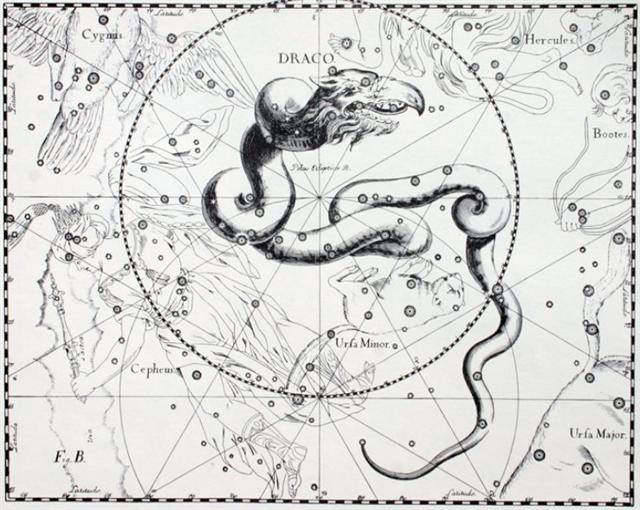In October 7 (40 weeks from January 1 and 200 days from March 21) the manzil Azzubra ends and in the following day the manzil Assarfa will begin. These are manzil number 11 respectively 12. A firm division in time is illustrated in Kb3-8 (where 3 * 8 = 24), but there is no sign of a newborn little one. Instead the preceding hanau (birth) glyph (Kb3-7) has a person with a flat head and counted from June 21 there are 108 days, 10 * 8 = 80. There is a maro string hanging down in front, which - together with the other evidence - presumably means the season of birth ends here. Ua (rain) in Kb3-5 has a mata in front (which negates the previous rainy, fertile, season):
Assarfa 13 is manzil day 157 (= 314 / 2). There are 65 days from Murzim 13 (92) to Assarfa 13 (157). There are also 65 days from Gregorian day 228 to right ascension day 14h:
The person in Kb4-4 has a high neck and pointed head. Gregorian day 293 (October 20) is 100 days after day 193 (where Castor rose heliacally). Thuban (α Draconis) was once the star at the pole:
... Alrai (γ Cephei) is just outside the circular path of the pole, and according to Wikipedia the north pole will be positioned close to Alrai around 4000 A.D. Earlier, around 2500 B.C., the pole star was Thuban (α Draconis). (2500 + 1870) / 71 = ca 62 days of precession. October 20 (10 * 20 = 200) is Gregorian day 293 and 293 - 62 = 231. ... The 10th hour is beginning 137 days after March 21, which resembles how the first manzil, Sheratan, is beginning 137 days counted from January 1. 216 = 80 + 136. Its end is with Gregorian day 231, 151 days counted from March 21 and 80 days from May 31 ...
|














